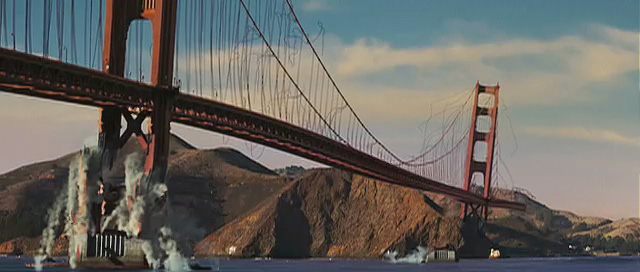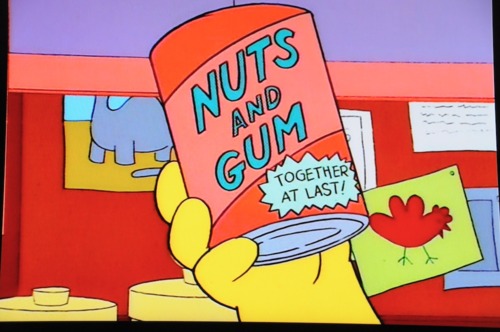Happy New Year! It’s 2014, finally. Good riddance to the last twelve months. Overall it’s been a tough year for so many of us around the world. Yet somehow, 2013 was fantastic for drafting Magic cards. For me, personally, Magic was a real bright spot. The team at Wizards of the Coast R&D has really figured out how to make amazing draft environments, and we players have been showered with awesomeness all year. I can’t wait to see what Born of the Gods brings to the table in the coming months. We’ve been on a great run since Magic 2013 came out 18 months ago.
This week I look back at the five draft formats of 2013: Gatecrash, Return to Ravnica Block (DGR), Modern Masters, Magic 2014, and Theros. For each format, I will share a memorable draft deck or two, and reflect on what made each set fun or sometimes not so fun.
Gatecrash
My two least favorite color combinations in Magic are white-red and red-green. Boros and Gruul were powerful and oppressive decks in Gatecrash draft. All I ever want to do is draw cards and make the game last forever. So you might have guessed that Gatecrash was not my jam, and you’d be correct. As the most aggressive format since Zendikar, Gatecrash made it hard to do anything other than slam two drops and attack attack attack. The Gruul and Boros mechanics, bloodrush and battallion, only work when you attack, and Simic’s evolve mechanic demands a deck chock full of creatures, leaving little room for interactive spells.
This deck is what you are supposed to do in Gatecrash:
Boringos
| Creatures (18) 3 Foundry Street Denizen 2 Firefist Striker 2 Skinbrand Goblin 2 Syndic of Tithes 2 Wojek Halberdiers 1 Sunhome Guildmage 1 Boros Reckoner 1 Warmind Infantry 2 Armored Transport 1 Scorchwalker 1 Spark Trooper Spells (6) 2 Massive Raid 1 Mugging 1 Act of Treason 1 Madcap Skills 1 Aerial Maneuver | Lands (16) 10 Mountain 6 Plains Sideboard (9) 1 Bomber Corps 1 Fortress Cyclops 1 Knight of Obligation 1 Guardian of the Gateless 1 Nav Squad Commandos 1 Knight Watch 1 Millennial Gargoyle 1 Shattering Blow 1 Furious Resistance |
Do you like attacking? Good, because that is all you will ever do. Drafting three packs of the same cards, with such clearly defined archetypes, leads to a lot of redundancy. Look at all those two- and three-ofs in my deck. Sure, there’s some spice like the [casthaven]Boros Reckoner[/casthaven] I first-picked to start the draft, but other powerful creatures like [casthaven]Guardian of the Gateless[/casthaven] and [casthaven]Knight of Obligation[/casthaven] languish in the sideboard, waiting for a slow game that never comes. The blazing speed of the format makes splashing a fool’s errand, which further solidifies each archetype. If you are a Boros drafter, you are nothing else, and you slam all the overpowered two drops like [casthaven]Wojek Halberdiers[/casthaven] and [casthaven]Daring Skyjek[/casthaven]. [casthaven]Mugging[/casthaven] is a windmill slam first pick. Not much room for subtlety there, and that led the format to growing stale quickly. Unless you really enjoy beating face, or you are a durdlicious glutton for punishment, there wasn’t much to encourage you to draft Gatecrash for the twentieth or thirtieth time.
While the Boros deck above is what you were supposed to draft, here’s what I always wanted to be drafting:
Let's Get Dimirious
Two drops and early defense are so essential to survival in Gatecrash that it skews any non-beatdown deck into jamming as many early plays as possible. I managed to 3-0 with this deck, although looking back on it now I think [casthaven]Frilled Oculus[/casthaven] should have been in the main deck over the ultimate durdle card, [casthaven]Mortus Strider[/casthaven]. Oh my visions of milling opponents to death with [casthaven]Sage’s Row Denizen[/casthaven], [casthaven]Undercity Informer[/casthaven], and [casthaven]Mortus Strider[/casthaven]. Good luck with that. If you can survive to get that engine going, you’ve already won. This deck’s true path to victory was tempo attacking with evasive creatures and ciphered [casthaven]Hands of Binding[/casthaven], with a [casthaven]Shadow Slice[/casthaven] or [casthaven]Call of the Nightwing[/casthaven] to finish it out.
And [casthaven]Bane Alley Broker[/casthaven]. That card. So good. Love? I want it in every limited deck I play for the rest of my life. It’s kind of annoying that its artwork is airbrush-sexualized (which Magic could still use a lot less of than the limited amount it has), because I truly read this one for the articles.
All of that said, I still appreciate Gatecrash and recognize the importance of variety in limited formats. Every set can’t be slow or even midrange. Magic offers so many strategies, and appeals to so many players of varying playstyles. It’s important to make some sets for people other than me. Gatecrash did that, and I am thankful it allowed the Boros legion to get its smashy smash out of its collective system to make room for the series of slower formats that followed.
Return to Ravnica Block (DGR)
Vareity. Brewing. Mix and match strategies. Play all the awesome cards. Figure out how to cast them. Splash Mountain! I’ve written about my love for full block Return to Ravnica draft, and while I know it is not the most-loved format, it will always hold a special place in my heart. I won more matches and more drafts in DGR than any other format. When Modern Masters came out, I just kept jamming DGR because it was so fun and I was so successful.
In a nutshell, a successful DGR draft deck centers in one guild, ideally a guild that nobody else is drafting, and it uses whatever available fixing to splash a handful of powerful spells to take the guild strategy over the top. The Dragon’s Maze cluestones were much maligned for being weak and always wheeling in draft, but I loved that I could pick two or three up in the back half of the Dragon’s Maze pack. As long as I had 20 powerful cards in my deck, I could afford to “waste” two or three slots on weak mana rocks.
Sometimes, you get a solid two-color deck and you barely need to splash at all:
Lord, Izzet I?
This deck was awesome. I spent a lot of time in triple Return to Ravnica draft trying to figure out how to make an Izzet deck work. The best strategy fit one of my favorite gameplans: get it 8-10 damage early, then amass cards for a single turn kill to do the rest of the damage. [casthaven]Teleportal[/casthaven] was the best card for that, which sadly didn’t make it to me in this draft, but I was quite pleased with how this Izzet deck turned out.
The unsung heroes of the deck were the five guildgates and the two [casthaven]Smelt-Ward Gatekeepers[/casthaven]. Threaten effects are great at swinging races in your favor, but at the cost of spending an entire card just for tempo and damage. The red gatekeepers could fairly reliably provide me a threaten, while still leaving behind a 2/4 body. That is especially useful as a blocking shield in case your opponent can manage to survive the alpha strike. Having all those black guildgates also let me get full value out of the two awesome fuse cards in the deck, Toil // Trouble and Far // Away. Toil // Trouble is especially useful here as it provides another way to deal a surprise 6-8 damage to finish a game after the initial onslaught has been stopped.
While we’re on the topic, let me say again how much I love the fuse cards. Super charms. Such versatility! Down // Dirty, which isn’t even one of the better fuse cards, epitomizes how valuable the fuse cards could be when building a deck. The green side gives you a [casthaven]Regrowth[/casthaven] and the black side a [casthaven]Mind Rot[/casthaven], at the extra cost of one mana each. Both cards are playable in limited, and sometimes very good, but generally putting those cards is your deck is a luxury. Limited decks have only forty cards, and each card slot is very valuable. I would be willing to play either [casthaven]Treasured Find[/casthaven] or [casthaven]Mind Rot[/casthaven] in my draft decks, but I never have room to play both. With Down // Dirty, I can put both effects into one card, and cast whichever is useful in any situation. When you look at an actually insane fuse card, like Far // Away, which does the same thing but with [casthaven]Unsummon[/casthaven] and [casthaven]Diabolic Edict[/casthaven], you can see how much value the card provides. Versatility is incredibly powerful in Magic, and especially in limited where our options are, shall we say, limited. Fuse cards, along with charms and other split cards, are my favorite in Magic. DGR let me play them, and I love DGR for that.
Sometimes in DGR you got to go deep:
Chicago Style
This deck looks like a hot mess. Playing it I felt unbeatable. The fact I could brew a monstrosity like this, and repeatedly do so and 3-0 draft pods, is why I love DGR. This is basically a mediocre Orzhov deck with some insane Boros, Rakdos, and Azorius cards folded in, yet it is amazing.
I’ve decided to include a third deck in my DGR tour. This one is not as good as the first two, but it highlights an important part of the DGR draft metagame. What do you do when you draft a Gatecrash guild in pack one and then get cut from those guild cards in pack two? I offer to you:
Cow Tools
If you draft a Return to Ravnica guild in pack one, you can read the signals being passed to you and make plans for how open you expect your guild to be, and plan what mono-colored or splash cards you need to take out of the Gatecrash pack to fill your expected holes. If you draft a Gatecrash guild in pack one, you have to cut any cards that might push someone to your left into drafting the same guild in the Gatecrash pack, where they will then destroy your deck by taking all the best guild cards before you get the chance. That can work if the packs cooperate, but sometimes you get stuck taking the best Gruul cards in the Dragon’s Maze pack but still have good Gruul (or red or green) cards in the pack that you have to pass along, sending a bad signal. This deck was exactly that.
I started my draft with a [casthaven]Gruul War Chant[/casthaven], which I consider a very strong incentive to draft Gruul. The problem was, I had to pass a bunch of good Boros and monocolored red, so I knew it was likely someone to my left would go into some sort of aggressive red deck. There wasn’t much else for me to take in the Dragon’s Maze pack, so I figured at least I knew what was coming (or not coming) in pack two and planned accordingly. When I got passed two [casthaven]Madcap Skills[/casthaven] early in pack two, along with a [casthaven]Skinbrand Goblin[/casthaven] but not much else good for a Gruul deck, I decided to maximize early drops and swarm with my [casthaven]Gruul War Chant[/casthaven] and friends. Seeing this, I was able to snap up two [casthaven]Spire Tracer[/casthaven]s and other weak cards on the wheel of the Gatecrash pack, and I ended up with a fairly strong hyper-aggro deck.
I managed to make the finals of the Magic Online 8-4 before succumbing to an actually strong deck. Still, I felt making the finals with this deck was a major accomplishment and a testament to the importance of understanding a draft format and adjusting to the reality on the ground. If you want to draft Gatecrash guilds in DGR, you have to know what to do when you get cut, or when you expect you will get cut.
Modern Masters
I’ve written previously about why I think Modern Masters is a good but not great draft format. Two big issues limit its awesomeness and prevent it from being one of the truly great masterpiece draft formats. First, it is all reprints, so there is only so much Wizards R&D can do to perfect the balance. Second, it is limited release, so there’s not much point in developing a depth to reward thirty or fifty iterations of the draft format. Thus, we have a lot of clearly-defined archetypes with limited but not great options to brew outside those bounds.
On top of that, some of the archetypes are bad. Black-green dredge is very hard to make work, while red-white giants is just a mess of underpowered cards plus [casthaven]Thundercloud Shaman[/casthaven] and [casthaven]Cloudgoat Ranger[/casthaven]. Blue-red storm/arcane can be very powerful and fun, but the draft has to go well for that deck to function. I just got crushed in a MMA team draft, winning one game out of three matches, when I got all the pieces for blue-red arcane except for the win conditions. One [casthaven]Dampen Thought[/casthaven] and two [casthaven]Glacial Ray[/casthaven]s aren’t going to get there no matter how many spells you can splice them onto.
So what happens when you can’t pull together a deck in a specific archetype and you have to combine two decks to make something close to good? You get a deck like this one I drafted in a Magic Online swiss queue:
Rogue Shakespeare Stout
| Creatures (16) 2 Blightspeaker 2 Rathi Trapper 2 Spellstutter Sprite 1 Tidehollow Sculler 2 Thieving Sprite 1 Dreamspoiler Witches 1 Latchkey Faerie 1 Murderous Redcap 2 Warren Pilferers 1 Earwig Squad 1 Tombstalker Spells (7) 2 Drag Down 2 Peppersmoke 1 Death Denied 1 Absorb Vis 1 Traumatic Visions | Lands (17) 9 Swamp 6 Island 1 Plains 1 Vivid Creek Sideboard (17) 1 Death Cloud 2 Street Wraith 1 Facevaulter 2 Traumatic Visions 1 Take Possession 1 Logic Knot 1 Erratic Mutation 2 Dampen Thought 2 Saltfield Recluse 1 Kataki, War’s Wage 1 Amrou Scout 1 Otherworldly Journey 1 Blinding Beam |
This deck was actually pretty good, and went 2-1. [casthaven]Earwig Squad[/casthaven] was the real all-star, prowling on turn three off such notable rogues as [casthaven]Rathi Trapper[/casthaven] and, well, [casthaven]Rathi Trapper[/casthaven]. Modern Masters does have some interesting cross-archetype synergies, so try to use them when you are stuck in a jam. And despite my criticisms, MMA really is a wonderful draft format with incredibly challenging and deep games.
Magic 2014
The previous year’s core set, Magic 2013, was perhaps the best core set draft format ever. It was well balanced and incredibly fun, with many flavorful one-off cards that truly capture why Magic is such an amazing game. [casthaven]Xathrid Gorgon[/casthaven]? [casthaven]Krenko, Mob Boss[/casthaven]? [casthaven]Deadly Recluse[/casthaven]? Yes please! Magic 2014, while not as fantastic as Magic 2013, was a worthy successor. M14 strikes me as the throw-back draft set, capturing the feel of an older era of magic where card advantage spells mattered more than the creatures you played. [casthaven]Elixir of Immortality[/casthaven] was a main-deck win condition!
I had a lot of fun drafting M14. It was an especially nice respite from the stressful complexity of drafting DGR and MMA. While the iconic decks were heavily blue, perhaps the most enjoyable draft deck I had in the format was this little token number:
Say Hello to My Little Friends
| Creatures (13) 2 Elvish Mystic 1 Deadly Recluse 1 Advocate of the Beast 1 Ogre Battledriver 1 Briarpack Alpha 1 Giant Spider 1 Rumbling Baloth 1 Marauding Maulhorn 1 Pitchburn Devils 1 Woodborn Behemoth 1 Battle Sliver 1 Sporemound Spells (10) 1 Shock 1 Giant Growth 1 Plummet 1 Ranger’s Guile 1 Bramblecrush 1 Thunder Strike 1 Trollhide 1 Volcanic Geyser 2 Howl of the Night Pack | Lands (17) 10 Forest 7 Mountain Sideboard (8) 1 Windstorm 1 Thunder Strike 1 Cyclops Tyrant 1 Seismic Stomp 1 Demolish 1 Burning Earth 1 Tidebinder Mage 1 Serra Angel |
[casthaven]Howl of the Night Pack[/casthaven]. [casthaven]Ogre Battledriver[/casthaven]. Game.
Theros
Finally we get to Theros. The draft format has proven to be very balanced and diverse. Aggro decks are strong but not oppressive. Monstrosity and bestow provide long game card advantage and inevitability. Devotion and heroic can enable crazy combo decks while also working in more linear attacking strategies. The rares are mostly fun and useful without too many being insane bombs. Even Elspeth, Sun’s Champion, the biggest “bomb” in the format, is tricky to use because many white decks want to win before six mana spells become relevant.
Theros presents many choices in drafting, deckbuilding, and gameplay. Almost any color combination can work well, and so many cards are playable in some way. Skillful play wins games. A turn two Ordeal of Purphoros can lead to a non-interactive game, but mostly the format led to fun and complex games.
I’ve written a lot about Theros over the past months, so I won’t say much more here. Instead, I leave you with one of the most insane decks I’ve drafted in the format, which I got in a Magic Online 8-4 draft on New Year’s Eve. Just look at this crazy thing. I was certainly in the open colors, and I easily won the draft without dropping a game. I’ve been a doubter of Vice President Bident (of Thassa) in limited, but no more! The card is like [casthaven]Whip of Erebos[/casthaven], instead you draw cards instead of gaining life. Except when you have [casthaven]Horizon Chimera[/casthaven], and then you do both. What a way to end a fantastic year of limited Magic!
Where's Thassa?
Here’s to another year of great drafting! What will Born of the Gods and Journey Into Nyx bring to the table? Will Magic 2015 continue the trend of amazing core set limited? How awesome will it be to draft the online-only Vintage Masters? I can’t wait to find out!
Carrie O’Hara is Editor-in-Chief of Hipsters of the Coast.






